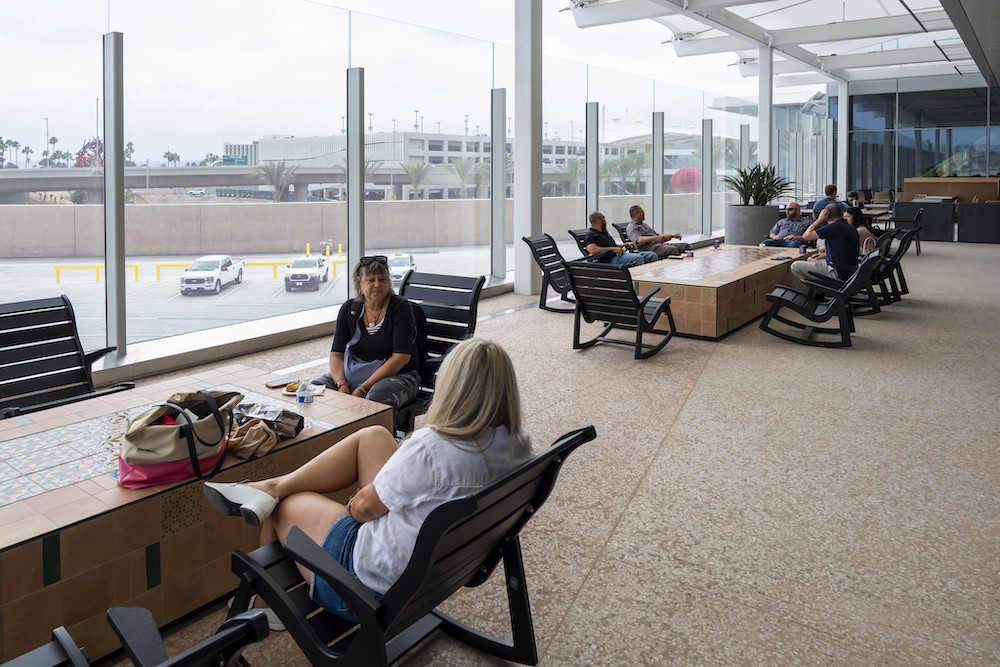
San Diego International Airport Rolls Out a New Front Door
San Diego’s New Terminal 1: What Planners Need to Know About the $3.4B Gateway
Reading Time: 4 minutes
When more than 5,000 locals lined up for a sneak peek of San Diego International Airport’s New Terminal 1 earlier this month, it wasn’t just a community event — it was a stress test for one of the largest infrastructure investments in the city’s history. Nearly 1,000 “passengers” volunteered for a simulated check in, passing through 10 new security lanes, boarding at mock gates, and even retrieving test bags. The goal: to catch glitches before the terminal’s official debut on September 22.
“This was invaluable in preparing for the opening,” said Brendan Reed, Senior Director of Operational Planning & Readiness at the San Diego County Regional Airport Authority. “Community participation gave us the chance to celebrate together and provided critical insights to fine-tune operations before we welcome the first passengers.”
For meeting and event planners, the opening of New T1 is more than a ribbon-cutting — it’s a new front door for attendees. Here’s what’s inside, why it matters, and how it could change the way groups experience San Diego.
A Gateway Built for Growth
The old Terminal 1 was 54 years old, undersized at 19 gates, and struggling to keep pace with demand. In 2019, SAN served more than 25 million passengers; by 2035, that number is projected to hit 39 million. New T1 replaces the original with up to 30 gates, expanded seating, improved security checkpoints, and a retail and dining lineup meant to rival what’s downtown.
But planners shouldn’t confuse more gates with more flights. As the Airport Authority points out, the airport’s single runway is the ultimate limiter on capacity. New T1 doesn’t add slots; it adds comfort, efficiency, and a dramatically improved traveler experience.
Further Reading: Can Convention Centers and Culture Coexist?
Beyond the Terminal: Transit and Traffic
For anyone who’s ever had to time a general session around San Diego’s notorious airport traffic, one of the biggest upgrades isn’t inside the terminal at all. A new three-lane on-airport entry roadway will pull airport-bound cars off North Harbor Drive, reducing congestion and freeing that artery for future transit improvements.
The project also reserves space for a transit-ready station within walking distance of both terminals, designed to connect seamlessly with whatever regional transit solution SANDAG and MTS approve. For planners, that could mean easier, more sustainable group transfers in the years ahead.
Amenities with Attendees in Mind
New T1 is aiming for more than just moving bodies from curb to gate. Features designed for modern travelers include:
1. An outdoor post-security patio overlooking San Diego Bay — a uniquely “San Diego” touch.
2. Children’s play areas to support attendees traveling with families.
3. Two airline or common-use lounges, a rarity for a terminal this size.
4. 5,500 parking spaces in a new plaza that shortens walking distances and replaces surface lots.
5. Public art installations designed not just for beauty, but to help with wayfinding.
Add in dual-level roads to separate departures from arrivals and expanded curbside check-in, and the terminal feels more like a purpose-built convention center lobby than a dated air travel shed.
The Timeline
Construction began in 2021. Phase 1A — the portion opening this September — includes the first new gates and amenities. The old Terminal 1 will then be demolished, with full completion of New T1 (Phase 1B) expected by early 2028, along with airfield improvements to ease taxiway congestion and cut emissions.
For events sourcing San Diego in the near term, that means a five-year window of phased enhancements — with an airport that will gradually feel less like a bottleneck and more like a selling point.
From Bottleneck to Brand Booster
Airports are often the first and last impressions attendees have of a destination. For San Diego, New T1 is more than a facelift — it’s a strategic play to remain competitive as one of the country’s most in-demand meetings markets.
For planners, the implications are clear: smoother arrivals and departures, reduced traffic stress, and a traveler experience that reinforces San Diego’s brand as a city that mixes business with leisure.
It won’t increase the number of planes landing, but it could dramatically improve how attendees feel about landing here. And in a business where experience is everything, that might be the biggest win of all.
Any thoughts, opinions, or news? Please share them with me at vince@meetingsevents.com.
Photo: Courtesy San Diego Airport




